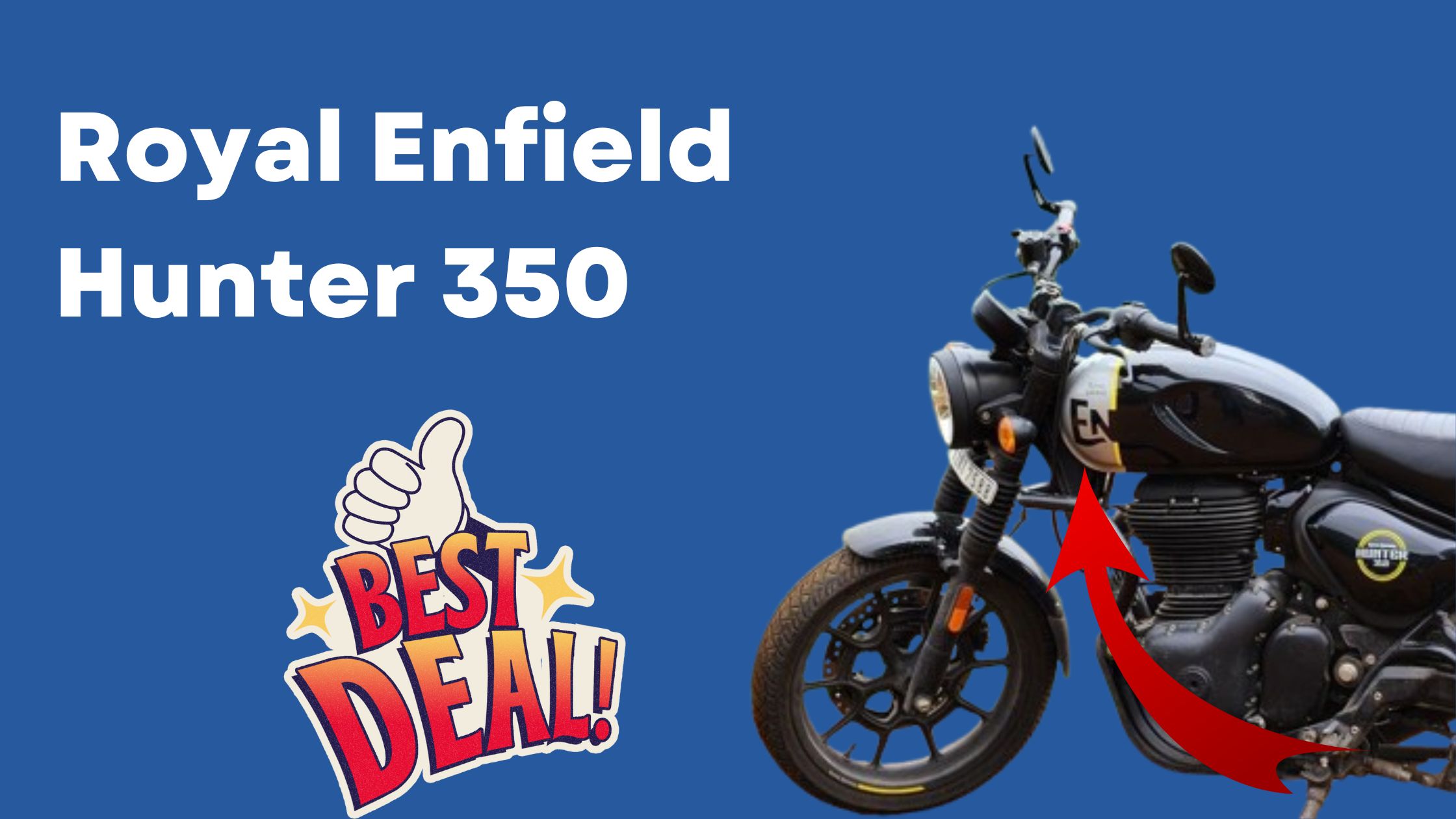The Royal Enfield Hunter 350 has emerged as a disruptor in the 350cc motorcycle segment, redefining urban and dynamic riding experiences. Since its launch in August 2022, it has not only captured the hearts of riders but also significantly impacted the market share of competitors like Jawa and Honda. With its competitive pricing, robust features, and performance, the Hunter 350 has become a formidable contender, challenging the dominance of Jawa and Honda in this segment. This review delves into why the Hunter 350 is a game-changer and how it has reshaped the market dynamics.
Table of Contents
1. Competitive Pricing: A Key Advantage of Royal Enfield Hunter 350
The Royal Enfield Hunter 350 is priced between ₹1.49 lakh and ₹1.75 lakh (ex-showroom), making it one of the most affordable 350cc motorcycles in India. In comparison, the Jawa 42 starts at ₹1.72 lakh, while the Honda CB350RS is priced at ₹2.03 lakh. This price advantage has made the Hunter 350 an attractive option for budget-conscious buyers, especially younger riders seeking a premium yet affordable motorcycle.
The Hunter 350’s affordability does not compromise on quality or features. It offers a balance of retro styling and modern functionality, making it a value-for-money proposition. This strategic pricing has allowed Royal Enfield to penetrate deeper into Tier-2 and Tier-3 markets, where affordability plays a crucial role in purchasing decisions.
2. Performance and Engine Specifications of Royal Enfield Hunter 350
Powered by a 349cc single-cylinder air-cooled engine, the Hunter 350 delivers 20.2 bhp at 6100 rpm and 27 Nm of torque at 4000 rpm. While its power output is slightly lower than the Jawa 42’s 26.94 bhp, the Hunter 350 compensates with smoother power delivery and better fuel efficiency, claiming 36.2 kmpl.
In contrast, the Jawa 42, with its 294.72 cc engine, offers higher power but falls short in terms of mileage, delivering only 32 kmpl. The Honda CB350RS, though more powerful with 20.7 bhp, is significantly more expensive and lacks the Hunter 350’s urban-friendly design.
The Hunter 350’s 5-speed gearbox ensures smooth gear shifts, making it ideal for both city commutes and highway rides. Its lightweight design (181 kg) further enhances its agility, making it easier to handle in traffic compared to the heavier Jawa and Honda models.
3. Design and Styling: A Blend of Retro and Modern
The Hunter 350’s design is a perfect blend of retro and modern aesthetics. Available in two variants—Retro and Metro—it caters to a wide range of preferences. The Retro variant features wire-spoke wheels and a simpler instrument cluster, while the Metro variant boasts alloy wheels and a more contemporary design.
In comparison, the Jawa 42’s design, though attractive, feels more traditional and less versatile. The Honda CB350RS, on the other hand, leans towards a classic cruiser style, which may not appeal to younger riders seeking a more dynamic look.
The Hunter 350’s compact dimensions and low seat height (790 mm) make it accessible to a broader audience, including shorter riders and women. This inclusivity has further expanded its market reach.
4. Features and Technology of Royal Enfield Hunter 350
The Hunter 350 comes equipped with modern features such as an LED tail lamp, USB charger, and optional Tripper navigation pod. While it may not offer smartphone connectivity like the TVS Ronin, it provides essential features that enhance the riding experience without inflating the price.
In contrast, the Jawa 42 lacks advanced features, relying on a basic analogue gauge and minimal connectivity options. The Honda CB350RS, though feature-rich, comes at a significantly higher price, making it less accessible to budget-conscious buyers.
5. Market Impact and Sales Performance of Royal Enfield Hunter 350
Since its launch, the Hunter 350 has been a consistent best-seller for Royal Enfield, second only to the Classic 350. By January 2025, it had crossed the 5 lakh sales milestone, a testament to its popularity.
This success has come at the expense of competitors like Jawa and Honda. Jawa, despite its strong heritage, has struggled to match the Hunter 350’s affordability and modern appeal. Honda, with its premium pricing, has found it challenging to compete in the budget segment.
The Hunter 350’s success has also spurred Royal Enfield’s expansion into international markets, including APAC, Europe, and North America. This global reach has further solidified its position as a market leader.
6. User Experience and Reviews of Royal Enfield Hunter 350
User reviews highlight the Hunter 350’s comfortable ride, excellent mileage, and stylish design as its standout features. Many riders appreciate its lightweight and nimble handling, making it ideal for urban commutes.
However, some users have criticized its stiff suspension, which can result in a harsh ride over rough surfaces. The heavy clutch has also been a point of concern for riders navigating heavy traffic.
Despite these minor drawbacks, the Hunter 350 has received overwhelmingly positive feedback, with an overall rating of 4.7/5 on platforms like BikeWale.
Conclusion: A Clear Winner in the 350cc Segment
The Royal Enfield Hunter 350 has redefined the 350cc motorcycle segment with its competitive pricing, robust performance, and stylish design. Its success has not only boosted Royal Enfield’s market share but also posed significant challenges to competitors like Jawa and Honda.
For riders seeking a blend of affordability, performance, and style, the Hunter 350 is undoubtedly the best choice in its segment. Its impact on the market is a testament to Royal Enfield’s ability to innovate and cater to the evolving needs of modern riders.
